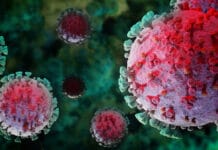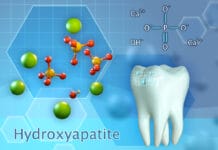Editor’s Note: As new research emerges, information about COVID-19 can change. We have made every attempt to ensure this article is up to date at the time of its original publication (August 28, 2023). However, knowledge about COVID-19 is constantly evolving.
We are finally on the other side of the pandemic, and though COVID-19 isn’t gone, we have prevention and treatment options that were not available during the height of the pandemic. However, we now have a new condition plaguing many of the COVID-19 survivors ‒ long COVID.
Long COVID is also referred to as post-COVID conditions, long-haul COVID, post-acute COVID-19, long-term effects of COVID, and chronic COVID.1 No matter what you call it, it can be downright life-altering.
Long COVID is defined as “signs, symptoms, and conditions that continue or develop after initial CVOID-19 infection.”1 These signs, symptoms, and conditions include oral manifestations, among other systemic manifestations. The current prevalence of long COVID is around 11%; prevalence has not decreased over time, highlighting the importance of awareness among health care professionals.2 As you can imagine, as dental professionals, it is pertinent that we know the oral manifestations associated with long COVID.
A study examined selected case studies of the most common oral manifestations associated with long COVID.3 Let’s explore what they found.
Case 1
In June 2021, a 43-year-old male had a routine dental visit. He contracted SARS-CoV-2 in December 2020 and experienced symptoms such as fever, malaise, taste and smell disturbances, and pneumonia. He took steroids during the acute phase and had post-COVID symptoms such as fatigue, sleep issues, breathing problems, and sweating.3
He had no other health conditions – he lives a healthy lifestyle and was being monitored by a pulmonologist.3
During the dental exam, he had painless, aphthous-like lesions on his hard palate. These were treated with laser therapy and mouthwash but persisted for 192 days after the initial infection phase. The oral lesions eventually healed, but the patient’s post-COVID symptoms remained.3
He was also diagnosed with pulmonary calcification. He continues to be observed by his dentist and pulmonologist.3
Case 2
On June 9, 2021, a 72-year-old man sought dental help due to ongoing oral bleeding, difficulty in swallowing, and burning sensations on his lips. He contracted SARS-CoV-2 in April 2021 and had preexisting conditions of hypertension and insulin resistance. Because he experienced breathlessness, constant diarrhea, and vomiting, he was hospitalized.3
After 59 days of recovering from COVID-19, he reported post-COVID symptoms, including persistent fatigue, difficulty concentrating, rapid heartbeats, breathlessness, and excessive sweating.3
The patient follows a diabetic diet, has a healthy weight, doesn’t smoke or drink, and manages his hypertension and diabetes with medications. A dental examination revealed bleeding and wound-like changes on the palate, along with cheilitis. He was referred to a periodontist and oral diseases specialist for further treatment, and the prognosis is uncertain.3
Case 3
On March 11, 2021, a 59-year-old female visited a dental office for ongoing xerostomia. She contracted SARS-CoV-2 in January 2021 and had a previous diagnosis of rheumatoid arthritis. She was hospitalized for seven days due to breathing difficulties and used an unspecified breathing aid during her hospitalization. Fifty-six days after her acute COVID-19 phase, she experienced post-COVID symptoms, including fatigue, irritability, sleep and concentration problems, and sweating.3
The patient is obese, follows a diet rich in fats and carbs, and doesn’t smoke or drink. An oral examination showed intense red-purple coloring of the entire mucosa and a smooth tongue surface. To combat dryness, she was advised to use saliva-stimulating tablets, artificial saliva, and chlorhexidine mouthwash. After two weeks, saliva production improved, dry mouth feeling lessened, and mucosa discoloration was reduced.3
The dental prognosis is positive, while her overall prognosis remains uncertain.3
Case 4
On June 7, 2021, a 48-year-old male visited a dental office due to prosthetic crowns coming off. He contracted SARS-CoV-2 in January 2021, experiencing loss of smell and taste and a nine-day fever without any other underlying health issues.3
After 129 days from the acute COVID-19 phase, he reported post-COVID symptoms such as difficulty concentrating, memory issues, shortness of breath, palpitations, and sweating.3
He maintains a balanced diet and a normal weight and doesn’t smoke excessively. He leads an active lifestyle and drinks alcohol in moderation.3
During an oral examination, an angioma-like lesion was found on the right side of his palate. The lesion decreased on its own after about three months but showed no further improvement over the next two months. He was referred to a periodontist and oral disease specialist.3
The dental treatment prognosis is positive, with significant improvement in the lesion. However, the overall prognosis remains uncertain.3
Case 5
On May 25, 2021, a 66-year-old woman came to the dental office due to a broken tooth. She had a mild case of SARS-CoV-2 infection in January 2021, experiencing loss of smell and taste for six days, and no other reported health issues associated with the infection. One hundred and sixteen days after her COVID-19 infection, she reported experiencing post-COVID symptoms, including chronic fatigue, depression, palpitations, and sweating.3
The patient has a balanced diet, maintains a healthy weight, and doesn’t smoke or consume alcohol excessively. Her daily activities are moderately active.3
During an oral examination, significant vascular changes were observed on her hard palate, with spontaneous bleeding but no pain. She was referred to a periodontist and oral disease specialist. The localized oral changes disappeared after 60 days. The overall prognosis remains uncertain.3
Case 6
On June 3, 2021, a 71-year-old man sought dental help for consistent bleeding in the mouth and dry lips. He had a mild case of SARS-CoV-2 infection in April 2021, experiencing loss of smell and taste for seven days. He has hypertension, type 1 diabetes, and allergies. He was hospitalized due to breathlessness, persistent diarrhea, and vomiting.3
He reported post-COVID symptoms 46 days after recovery, including concentration and taste issues, shortness of breath, and vomiting.3
The patient follows a diabetic diet, maintains a healthy weight, and abstains from smoking and alcohol. He has limited ability in daily activities and takes medications for hypertension, insulin injections, and antiallergic agents.3
An oral examination revealed tongue mycosis, extensive palate lesions, spontaneous bleeding, and cheilitis. He was treated with antifungal Nystatin and vitamin A+E+F ointment for 10 days. However, due to ongoing bleeding and palate changes, he was referred to a periodontist and oral disease specialist. Both the local oral changes and the general post-COVID symptoms persist.3
Symptoms of Long COVID
Understanding the signs and symptoms of long COVID may help in giving your patient a differential diagnosis. This will require a complete and regularly updated medical history that includes questions about previous COVID-19 infections. However, if your patient presents with persistent oral manifestations accompanied by other symptoms, a referral to a specialist would be in their best interest. As an aside, any oral lesion that persists for more than two weeks is reason to refer the patient to a specialist, even in the absence of any other systemic signs and symptoms.
Signs and Symptoms of Long COVID
*This is not a comprehensive list
| Anatomy Affected | Symptoms |
| General | · Tiredness or fatigue that interferes with daily life
· Post-exertional malaise · Fever |
| Respiratory and cardiac | · Difficulty breathing/shortness of breath
· Cough · Chest pain · Heart palpitations |
| Neurological | · Brain fog
· Headache · Sleep problems · Lightheadedness · Pins and needles feeling · Change in smell or taste · Depression or anxiety |
| Gastrointestinal | · Diarrhea
· Stomach pain |
| Oral | · Pain
· Xerostomia · Erythema · Various changes in the mucosa and lips · White plaques · Mycosis · Various changes of the tongue · Swelling · Herpetic lesions · Pemphigus · Lichen planus · Sjogren’s syndrome |
| Other | · Joint or muscle pain
· Rash · Changes in menstrual cycle |
Adapted from Centers for Disease Control and Prevention and Rafałowicz et al. 1,3
Long COVID Diagnosis and Treatment Options
Currently, there is no specific test to identify long COVID; it is a diagnosis of exclusion. Physicians generally do a battery of tests to determine if any organ systems have been damaged, such as vital signs, physical, cognitive, and psychological testing. If any of these tests indicate an organ system is damaged, specific tests for that organ system will be conducted (i.e., cardiac signs and symptoms may require an ECG or EKG).4
Treatment is largely supportive or palliative; however, there are some specific treatment options depending on the organ systems that are involved:4
- Fatigue: Patients are taught strategies to prioritize activities. In some cases, patients are encouraged to start physical exercise programs that include stretching, strength training, and aerobic activities.
- Respiratory symptoms: Patients may need supplemental oxygen. They are often encouraged to monitor their blood oxygen levels and seek immediate medical attention if it drops below 92. They may also begin pulmonary rehab and practice breathing exercises.
- Cardiac symptoms: Cardiac rehabilitation and medication. The patient will likely need to be followed by a cardiologist.
- Psychological symptoms: Counseling, support groups, and medication.
- Taste and smell symptoms: Olfactory training and medication. The patient may need to be followed by an ENT.
- Oral symptoms: No guidance currently available.
When addressing oral manifestations of long-COVID, a multidisciplinary approach is best. Palliative care to treat symptoms is the best guidance from the current evidence. Guidelines may change over time as newer research is conducted.5
Conclusion
COVID-19 is here to stay, which means many dental professionals will likely face patients with signs and symptoms that simply do not fit with previously understood diseases and infections with oral manifestations. Adding long COVID to your differential diagnosis will help you better serve your patients and hopefully help your patient get the answers and care they need and deserve.
Before you leave, check out the Today’s RDH self-study CE courses. All courses are peer-reviewed and non-sponsored to focus solely on high-quality education. Click here now.
Listen to the Today’s RDH Dental Hygiene Podcast Below:
References
- Long COVID or Post-COVID Conditions. (2023, July 20). Centers for Disease Control and Prevention. https://www.cdc.gov/coronavirus/2019-ncov/long-term-effects/index.html
- Long COVID and Significant Activity Limitation Among Adults, by Age – United States, June 1–13, 2022, to June 7–19, 2023. (2023, August 11). MMWR, Centers for Disease Control and Prevention. https://www.cdc.gov/mmwr/volumes/72/wr/mm7232a3.htm
- Rafałowicz, B., Wagner, L., Rafałowicz, J. Long COVID Oral Cavity Symptoms Based on Selected Clinical Cases. European Journal of Dentistry. 2022; 16(2): 458-463. https://doi.org/10.1055/s-0041-1739445
- Long COVID. (n.d.) Yale Medicine. https://www.yalemedicine.org/conditions/long-covid-post-acute-sequelae-of-sars-cov-2-infection-pasc
- Najafi, M.B., Javanmard, S.H. Post-COVID-19 Syndrome Mechanisms, Prevention and Management. International Journal of Preventive Medicine. 2023; 14: 59. https://www.ncbi.nlm.nih.gov/pmc/articles/PMC10284243/












